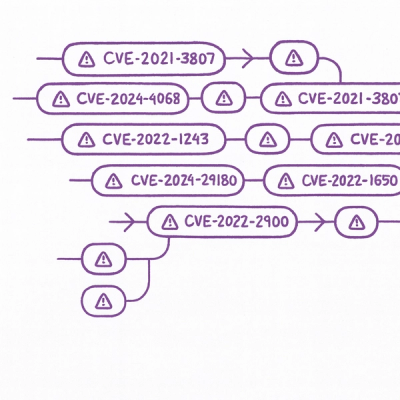
Security News
Astral Launches pyx: A Python-Native Package Registry
Astral unveils pyx, a Python-native package registry in beta, designed to speed installs, enhance security, and integrate deeply with uv.
= RSence-3.0[http://rsence.org/]
= Notice These docs are somewhat outdated at the moment, and RSence needs rsnc.js cloned into /client of this repository.
== Sources for rsnc.js:
== Introduction
RSence is a different and unique development model and software frameworks designed first-hand for real-time web applications. RSence consists of separate, but tigtly integrated data- and user interface frameworks.
RSence could be classified as a thin server - thick client system.
Applications and submobules are installed as indepenent plugin bundles into the plugins folder of a RSence environment, which in itself is a self-contained bundle. A big part of RSence itself is implemented as shared plugin bundles.
The user interface framework of RSence is implemented in high-level user interface widget classes. The widget classes share a common foundation API and access the browser's native API's using an abstracted event- and element layer, which provides exceptional cross-browser compatibility.
The data framework of RSence is a event-driven system, which synchronized shared values between the client and server. It's like a realtime bidirectional form-submission engine that handles data changes intelligently. On the client, changed values trigger events on user interface widgets. On the server, changed values trigger events on value responder methods of server plugin modules. It doesn't matter if the change originates on client or server, it's all synchronized and propagated automatically.
The server framework is implemented as a high-level, modular data-event-driven system, which handles delegation of tasks impossible to implement using a client-only approach. Client sessions are selectively connected to other client sessions and legacy back-ends via the server by using the data framework.
The client is written in Javascript and the server is written in Ruby. The client also supports CoffeeScript for custom logic. In many cases, no custom client logic is needed; the user interfaces can be defined in tree-like data models. By default, the models are parsed from YAML files, and other structured data formats are possible, including XML, JSON, databases or any custom logic capable of producing similar objects. The server can connect to custom environments and legacy backends accessible on the server, including software written in other languages.
== Installing RSence Just run this command in the shell, if you have functioning ruby environment installed. Otherwise, read the {file:INSTALL Install Guide} for full installation instructions. gem install rsence
== Initializing a new RSence environment
The +init+ command will create a directory called env_dir in this example. It asks a few questions about the environment. Use a path and project name that matches your purposes.
rsence init /home/me/rsence_projects/env_dir
== Project environment structure
==== The basic structure of a project environment (where env_dir is the directory of your project) is:
dir :: +env_dir/+ :: The environment directory of your project.
file :: +env_dir/conf/config.yaml+ :: The configuration file to load by default. It extends the {file:default_conf default configuration}.
dir :: +env_dir/run/+ :: This default directory for runtime files, like the PID file of the running rsence instance.
dir :: +env_dir/log/+ :: The default directory for log files. +rsence.stderr+ contains error output of the RSence server daemon and installed plugins, including warnings. +rsence.stdout+ contains the standard output of the RSence server daemon and installed plugins.
dir :: +env_dir/db/+ :: The default directory for database files. +ses.db+ is the standard SQLite session database, if enabled.
dir :: +env_dir/plugins/+ :: The default directory for installed plugin bundles. A newly initialized environment includes the +welcome+ plugin. Feel free to remove it.
file :: +env_dir/VERSION+ :: The version of RSence used to initialize the environment. Reserved for future upgrade usage.
file :: +env_dir/README+ :: A README file template. Describes what the env_dir is about. Edit it to match your project.
=== Configuration file loading order The configuration files are loaded and applied in this order:
Use the additional configuration files to match system- or user-specific configurations that are common for all projects.
== Running a project
Each command-line tool command takes a number of options, the +env_dir+ argument defaults to the current working directory, otherwise specify the relative or full path to your project environment.
==== Some common options are: +-a+:: Automatic updates. RSence reloads automatically changed plugin bundles and client libraries. +-f+:: Doesn't redirect the standard output into a log file. Useful for development when combined with the +run+ command. +-d+:: Debug mode. Like +-a+ but much more verbose and doesn't obfuscate client data.
=== Running RSence in foreground rsence run [options] [env_dir]
=== Starting the RSence daemon rsence start [options] [env_dir]
=== Stopping the RSence daemon rsence stop [options] [env_dir]
=== Restarting the RSence daemon rsence restart [options] [env_dir]
=== Checking if project is running rsence status [options] [env_dir]
=== Example: rsence run -af /home/me/projects/hello_world
== RSence command-line tool help
=== Lists all available commands rsence help
=== Getting detailed help of a command rsence help
=== Example:
rsence help run
For more detailed installation and usage instructions, read the {file:INSTALL Install Guide} document.
=== The bleeding edge (for developers) RSence comes in two varieties:
To use "rsence-pre", install the "rsence-pre" gem and use the "rsence-pre" instead of "rsence" command-line tool.
=== Licensing and commercial support options
=== Community support
=== Keywords: HTML5 Javascript CoffeeScript Ruby RIA Server Client Data-Driven Event-Driven Web Framework
FAQs
Unknown package
We found that rsence-pre demonstrated a not healthy version release cadence and project activity because the last version was released a year ago. It has 2 open source maintainers collaborating on the project.
Did you know?

Socket for GitHub automatically highlights issues in each pull request and monitors the health of all your open source dependencies. Discover the contents of your packages and block harmful activity before you install or update your dependencies.

Security News
Astral unveils pyx, a Python-native package registry in beta, designed to speed installs, enhance security, and integrate deeply with uv.

Security News
The Latio podcast explores how static and runtime reachability help teams prioritize exploitable vulnerabilities and streamline AppSec workflows.

Security News
The latest Opengrep releases add Apex scanning, precision rule tuning, and performance gains for open source static code analysis.